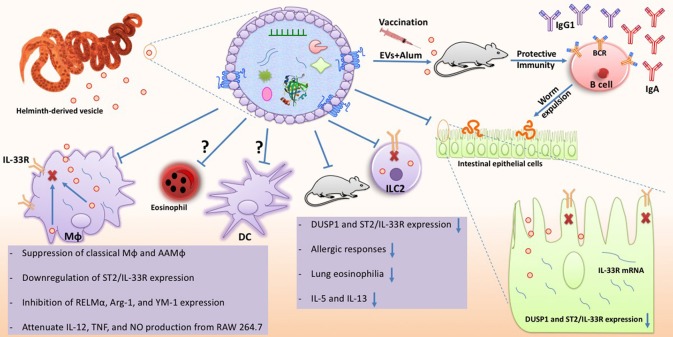Figure 3.
Schematic illustration of known effects imposed by helminth-derived EVs during interaction with host immunity. As illustrated here, EVs can affect different host cells including immune cells and intestinal epithelial cells (IECs). Also, they can potentially be used to develop new vaccines against helminths. EVs deliver cargo containing various biomolecules to host cells which can interfere with host cell gene transcription. EVs are internalized by macrophages and IECs via unknown mechanism and target IL-33R and DUSP1 expression reducing signal transmission and leads to inhibition of helminth expulsion. EVs have also shown great potential in priming host immunity along with Alum as a vaccine complex against helminth infections. Effective suppression of both classical Mϕ and AAMϕ have also been reported, implying EVs are well-equipped with a wide range of active components. In addition to in vitro studies, immunomodulatory functions of EVs have also been monitored in in vivo model in which allergic responses, associated cytokines, ILC2, and eosinophilia are down-regulated in Alternaria-exposed mice.

